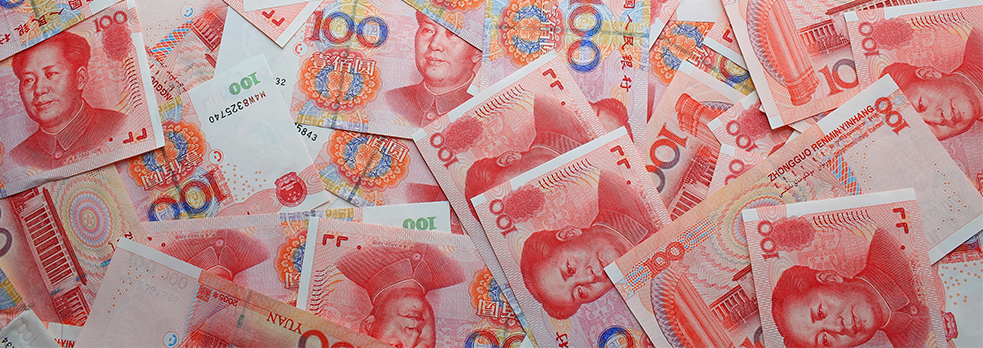The development of China's outbound direct investment (ODI) is closely related to its national development strategy. As the national development strategy becomes more concrete, the investment and cooperation areas of ODI are gradually expanding and becoming more precise.
The "Going out(走出去)" strategy, launched in the early 2000s to encourage the oversea expansion of domestic companies, paved the way for Chinese enterprises to venture abroad. During the second term of Hu Jintao’s leadership (2008~2012), China actively pursued supportive policies to expand the scale of ODI and to promote the companies’ oversea expansion, especially in traditional manufacturing and infrastructure industries that were considered competitive. Through policies such as administrative simplification and the promotion of overseas expansion for various ownership-based enterprises, the government sought to stimulate the overseas ventures of businesses.
These policy efforts have been successfully rewarded by rapid growth momentum in both scale and scope, as the Belt and Road Initiative and investment in strategic resources further boosted Chinese companies’ outbound investment during the first term of Xi (2013-2017). According to China's Ministry of Commerce, the size of China's ODI has reached a record high of $196.15 billion, which is 2.5 times larger than that of 2008 ($55.91 billion). As a result, China’s ODI has gained significant growth momentum in terms of scale.
Subsequently, China's ODI went through a period of adjustment due to the problems of reckless management of ODI, escalating tensions between the U.S. and China, increasing regulatory measures on Chinese overseas investments of western countries, and the impact of the COVID-19 pandemic in 2020. This period coincided with the second term of the Xi Jinping administration (2018-2022) when China's national strategy symbolized by the ‘China Dream’ gradually took shape. During this period, China’s ODI underwent structural adjustments not only to response previous issues but also to focus more on aligning with the national development strategy rather than simply pursuing growth in scale.
‘The Guiding Opinion on the Direction and Norms of Overseas Investment (关于进一步引导和规范境外投资方向的指导意见) (hereinafter referred to as the ‘Opinion’)’ announced in August 2017, which categorized China’s ODI into three areas: encouragement, restriction, and prohibition. The announcement of ‘opinion’ means that the Chinese government has begun to intervene in the field of ODI by encouraging investments aligned with China's national strategy and restricting investments in non-productive sectors, such as real estate, cinemas, entertainment and so on. After the release of the opinion, investments in those non-productive sectors experienced a swift decline, whereas there was a notable surge in overseas M&A focused on securing advanced countries' strategic resources, particularly in technology. Since then, however, with the onset of tensions between the U.S. and China, Western countries has begun to impose restrictions on Chinese companies, leading to a rapid decline in overseas M&A involving U.S. and EU technology companies. Investments in national strategic areas such as supply chain stabilization, enhancement of global corporate capabilities, expansion into emerging markets, and the overall refinement of the Belt and Road Initiative continued to be prioritized. This means that ODI continues to play a crucial role as a tool to support national development strategies.
As China’s ODI becomes more reflective of the national development strategy, there is a shift in the investment sectors. Investment in facilities and equipment manufacturing, high-tech manufacturing, strategic resource exploration, and projects related to the Belt and Road Initiative are emphasized rather than investment in traditional manufacturing. At the same time, the proportion of Investment in Asia, South America, Africa, and the Middle East has consistently increased, demonstrating a sustained focus on these regions with high policy coherence.
The projection of the national strategy on ODI is also manifested in the Belt and Road Initiative (BRI) refinement strategy. The advancement of the BRI, driven through the Second Belt and Road Forum for International Cooperation held in 2019, not only aimed to overcome the challenges China faced in the early stages of the BRI but also reflected China's national strategy in the timeline and development goals of the BRI refinement. In this forum, the Chinese government outlined its intention to enhance the high-quality development of the BRI by strengthening links with the global supply chain, industrial networks, and value chains. They emphasized the provision of strong impetus for the economic growth of Belt and Road partner countries through product, capital, technology, and personnel exchanges. China also high-lighted the pursuit of development opportunities through digitization, networking, and smart solutions, and the joint exploration of new technologies, industries, and business models to create new momentum for economic development.
On the surface, these development policies appear to be actively responding to the demands of global economic development. However, when compared to China's next-generation economic development plan, such as the dual circulation strategy, it becomes clear that many elements of China's national development strategy are incorporated into the BRI refinement strategy. These include the integration of global supply chains, value chains, and logistics networks, as well as aspects of China's strategies such as carbon-neutral development, fostering digital economy, and promoting overseas expansion of small and medium-sized enterprises. The projection of China's national strategy within the BRI refinement strategy demonstrates the intention of the Chinese government to leverage ODI as a means to support national development strategies.
Today, economic security has become a universal concept. In such an era, securing strategic industries and strategic resources is of paramount importance. Therefore, the deliberate projection of China's national development strategy on its ODI, which has the scale advantage of being the world's second largest, poses numerous challenges to the Korean government.
It is necessary for Korea to establish strategic approaches for outbound direct investment in order to ensure national competitiveness. In the past, Korea has pursued corporate-led ODI. However, with the recent emergence of the concept of economic security, business-led approaches to investment in strategic industries may have limitations. To address this, Korea should consider enhancing government-business cooperation channels to support corporate overseas investment in strategic industries. Initial dialogues between governments could take place through bilateral and multilateral summits involving regions strategically aligned with Korea, coupled with concurrent utilization of business forums. In this regard, recent initiatives such as 'One Team Korea' in the Middle East can be seen as a commendable example of joint government-business efforts to expand international cooperation.
Furthermore, it is necessary to create investment momentum to secure the market for strategic emerging industries such as green and digital shares in developing countries. Because the emerging industrial markets in developing countries that China aims to expand through platforms like the BRI and BRICS, are strategically important markets for South Korea as well. Therefore, various support measures are needed to enhance the competitiveness and comparative advantage of Korean companies in the emerging industries of developing countries. To this end, domestic guidelines and policy incentives should be provided for large corporations to diversify their businesses, and a foundation should be laid to facilitate the linkage between the growth of small and medium-sized enterprises and their overseas expansion.
Ph.D., Associate Research Fellow, China Team
Korea Institute for International Economic Policy



 KIEP Opinions_no282(최종).pdf
(276.15KB / 다운로드 357회)
KIEP Opinions_no282(최종).pdf
(276.15KB / 다운로드 357회)
 공공저작물 자유이용허락 표시기준 (공공누리, KOGL) 제4유형
공공저작물 자유이용허락 표시기준 (공공누리, KOGL) 제4유형
